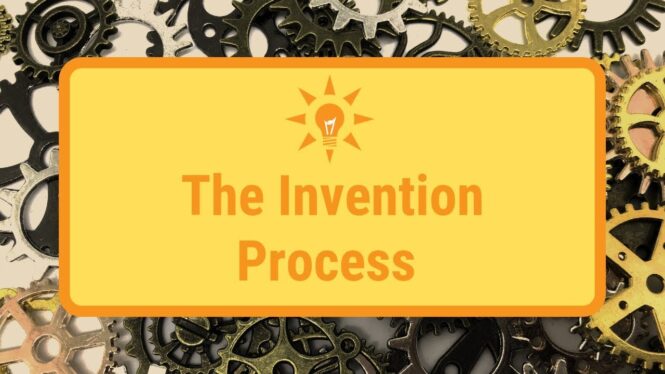In a world where every convenience, gadget, and tool traces back to a singular creative spark, inventions shape the narrative of human progress. These tangible manifestations of ideas redefine possibilities and push the boundaries of what’s achievable.
From the wheel to the internet, inventions have acted as cornerstones for civilization, ushering in new eras of advancement. This guide aims to provide you with a comprehensive roadmap to channel your inspiration into the next groundbreaking invention that could change the world.
The Birth of an Idea

Every revolutionary invention starts not just as a simple thought but as a moment of eureka. Whether it’s a solution to a long-standing problem, a refinement to an existing product, or a completely new and unprecedented creation, that fleeting moment of inspiration is gold. But how do you recognize, capture, and harness this ethereal inspiration? It’s essential to cultivate a habit of jotting down your ideas, pondering on them, and expanding upon them during moments of quiet reflection.
Famous inventions, like the Post-it notes, the microwave, or even the concept of an airplane, began as simple ideas, as mere ripples in the minds of their inventors. Throughout this multifaceted journey, seeking guidance from those who’ve treaded this path before can be invaluable. Check here for forums, workshops, or communities where seasoned inventors generously share their experiences and nuggets of wisdom.
Research and Validation
Before diving headfirst into your invention, you must take a step back and critically assess its potential and feasibility. Research ensures that your idea is both unique and relevant, while validation gives you the confidence that there’s a demand or a niche for your creation in the market. Begin by examining existing products, delve deep into patent databases, and engage in competitor analysis.
Study market demands and foresee future trends. Tools like Google Trends or specialized market research platforms can be your allies in this stage. For additional information and a more hands-on approach, consider attending trade shows, networking with industry experts, or even surveying potential users for direct insights.
The Invention Process

Making an invention is akin to crafting a masterpiece. It requires weaving together intricate threads of creativity, persistence, technical expertise, and sometimes even a touch of serendipity. The journey typically comprises:
Ideation: More than just brainstorming, this stage is about nurturing and expanding your initial concept. It involves questioning, challenging, and strengthening your idea. Seek feedback, engage in constructive debates, and allow your concept to evolve.
Design: Beyond mere sketching or modeling, this is where your idea gets a visual or tangible form. Whether you use traditional sketching methods, state-of-the-art software, or even sculpting materials, this phase is all about detailing and envisioning your invention’s look, feel, and function.
Prototyping: This is the exciting phase where your invention leaps off the paper and becomes a working model. The process can be iterative, with multiple versions being created to tweak and refine the functionality.
Testing: Not just about ensuring functionality, this stage is pivotal for safety, efficiency, and user-friendliness. It’s where real-world scenarios challenge your invention, revealing areas of improvement.
Intellectual Property
Your invention, akin to a treasured brainchild, deserves protection. In the vast world of innovation, intellectual property safeguards ensure that your unique creation remains rightfully yours. Understanding the intricacies of patents, trademarks, and copyrights can be daunting, but they’re indispensable.
Patents offer protection against others making, selling, or using your invention without permission. Conducting a thorough patent search is crucial to ensure your idea hasn’t already been claimed. Once certain, the application process can be initiated, albeit it’s lengthy and requires meticulous documentation.
Trademarks protect symbols, names, and slogans used to identify goods or services. If your invention comes with a unique logo or brand name, this is your go-to protection.
Copyrights protect original artistic or literary works associated with your invention. Think user manuals, advertisements, or any related creative content.
Building a Team

While solitary genius inventors do exist, collaboration often propels ideas to heights unimaginable. Assembling a diverse and skilled team not only aids in refining the invention but also navigates the multifaceted path from conception to market launch. Consider including:
- Designers to refine the aesthetic and functional appeal.
- Engineers to solve technical challenges.
- Marketers to strategize its introduction to the eager public.
Building a strong network, attending innovation hubs, or collaborating with academic institutions can aid in finding the right collaborators. Remember, a harmonious team, driven by a shared vision, can be your invention’s greatest asset.
Funding Your Invention
Transforming a brilliant idea into a tangible product often requires significant financial investment. Fortunately, the modern era presents a plethora of funding avenues for budding inventors:
Self-funding: Bootstrapping, or using personal savings, offers the advantage of retaining full control. However, it also bears the brunt of risk.
Investors: Venture capitalists or angel investors can infuse your project with substantial funds. In return, they usually seek equity or a share of the profits. Crafting a compelling pitch, showcasing both the invention’s potential and your passion, is key to attracting them.
Crowdfunding: Platforms like Kickstarter or Indiegogo allow inventors to present their ideas to the public, who then financially support the projects they believe in. Not only does this method secure funds, but it also validates market interest.
Prototyping and Testing

An idea, no matter how revolutionary, holds little weight without a tangible manifestation. Prototyping breathes life into your concept, offering a 3D, real-world representation. This prototype doesn’t need to be perfect but functional enough for demonstrations and testing. Employing techniques like 3D printing or CAD modeling can aid in this endeavor.
Once a prototype is ready, rigorous testing is paramount. From safety evaluations to user experience trials, this phase ensures your invention is market-ready. Engaging focus groups or beta testers provides invaluable feedback, revealing strengths and pinpointing areas of enhancement.
Manufacturing and Production
Once the invention is finalized, the focus shifts to mass production. Navigating the manufacturing realm requires meticulous planning. From choosing the right manufacturing partner to ensuring quality control, every decision impacts the end product. Prioritize suppliers who understand your vision and maintain stringent quality standards. Simultaneously, remain vigilant about cost optimization, ensuring a balance between affordability and quality.
Marketing and Launch
With a finished product in hand, it’s time to introduce it to the world. A strategic marketing campaign can amplify your invention’s reach and appeal. Begin by understanding your target audience, tailoring your message to resonate with them. Leveraging social media, influencer partnerships, and public relations can generate buzz. A compelling product launch, be it a grand event or a digital release, sets the stage for your invention’s entry into the market.
 Imagup General Magazine 2024
Imagup General Magazine 2024



